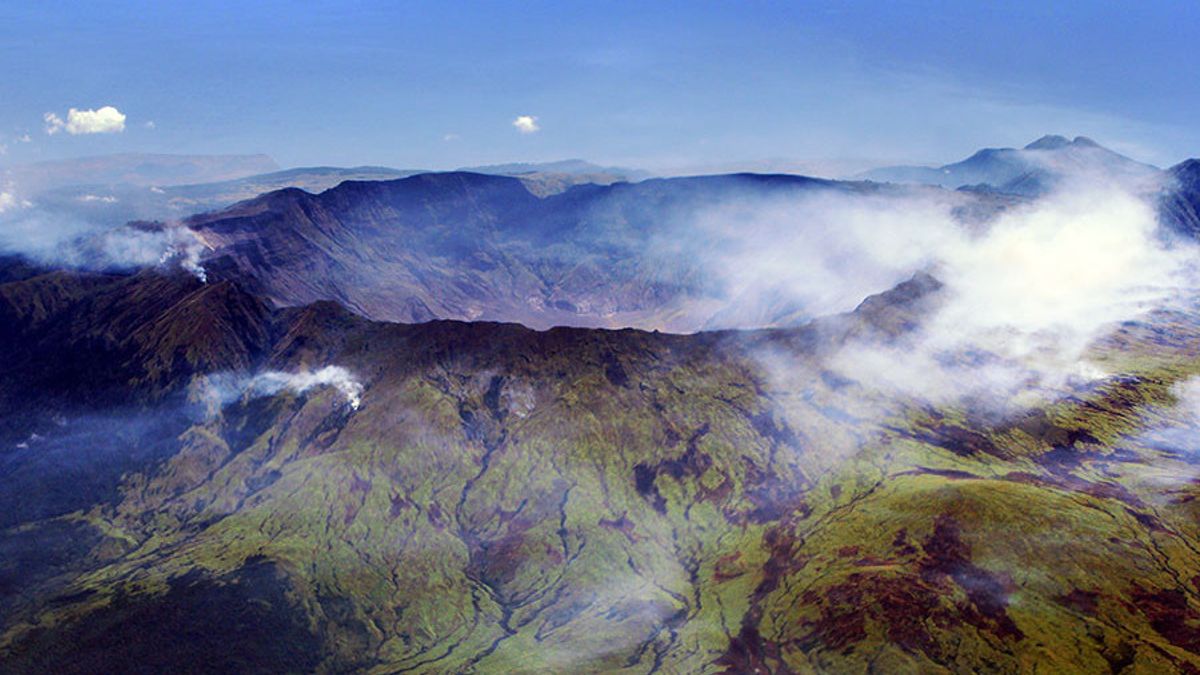JAKARTA World history on April 17, 1815 recorded the massive eruption of Mount Tambora on the island of Sumbawa, West Nusa Tenggara. The eruption process, which started from April 5 until it reached its peak 12 days later, killed at least 100,000 people, both direct and indirect.
The eruption of Mount Tambora is the largest, ever recorded in the history list of volcanic eruptions around the world.
Tambora's eruption was completely unexpected, considering that the stratovolcano-type mountain had been sleeping for thousands of years. Since it first showed symptoms and eruptions, Tambora has experienced several eruptions.
The first eruption was recorded on April 10, with the ejection of ash reaching an altitude of 32 kilometers. Volcanic ash covered Sumbawa with a thickness of up to 1.5 meters.
Five days later, Tambora again threw particles from inside the earth's stomach. This time the eruption was much more powerful, covering the sun for several days.
Not only that, hot rock particles that fell into the sea caused a vapor explosion, as well as a medium-scale tsunami. The devastating scale of the eruption of Mount Tambora could be measured from the reduced height of the mountain. If before the Tambora eruption had a height of 4,200 meters, then after the eruption the height of the mountain was only 2700 meters left.
One thing that is also recognized as the greatness of the eruption of Mount Tambora is its ability to change the world's climate. So many dust particles were ejected into the atmosphere that blocked sunlight, causing the earth to suddenly cool down.
The influence was not only felt in April, but until the following months. The European continent, which was supposed to experience the summer from June to July, suddenly experienced winter. Snow and ice include the Blue Continent, resulting in chaos with all plans.
One of the historical events considered to be the result of the eruption of Mount Tambora, was Napoleon Bonaparte's defeat in the battle at Waterloo (Belgium) on June 18, 1815.
From the results of research by historians in Europe, the cold and wet conditions in Belgium in the summer made the strategy that Napoleon had compiled a mess. The movement of the French Emperor's troops slowed down, so that enemies were able to trap them in the midst of fighting.
Vicor Hugo in the novel Les Miserables said about the Battle of Waterloo: a cloudy sky that doesn't match the season is enough to cause a world collapse. Now we are one step closer to understanding Tambora's role in the fighting, according to Dr. Matthew Gange, senior lecturer at the Department of Earth Science and Engineering at the Imperial College London in the Geological Journal entitled The 11 Biggest Vocal Eruption in History published August 21, 2018.
The victims who were directly affected by the eruption were said to be around 10 thousand people. The rest were around 80 thousand people who died from hunger due to crop failure, and disease outbreaks.
The English, Chinese, Japanese, Arabic, and French versions are automatically generated by the AI. So there may still be inaccuracies in translating, please always see Indonesian as our main language. (system supported by DigitalSiber.id)











